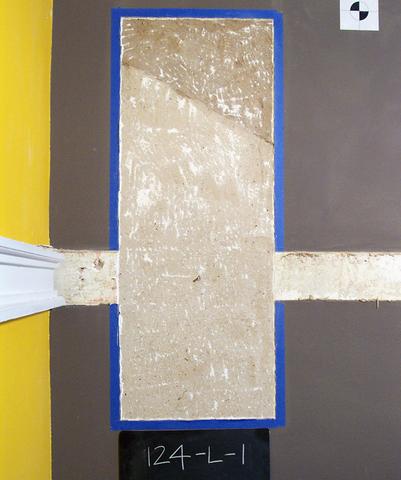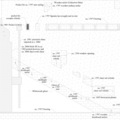
While the slope of the stair could have theoretically been determined by laying out the first and second floor newel post locations along with the landings and then plotting a line to connect all three elements, it would be more accurate to find first hand evidence for the slope. Incredibly, at Montpelier evidence for the slope was found during the initial investigation. After a thin layer of post-Madison finish plaster was removed from the south wall in the passage, a raking line was found that had been created by two different generations of plaster. This raking line was formed when a ca. 1844 plaster found above the stair was abutted by ca. 1850 plaster that was installed when the Madison stair was replaced with a new stair. The slope captured by the line in the plaster gave the exact location of the top of the original skirt board and allowed the Restoration Team to exactly reproduce the stair’s Madison-era slope.

©The Montpelier Foundation
|
|
The lower, whiter plaster dates to ca. 1855 while the upper, darker colored plaster was installed in ca. 1844. The raking line where they meet revealed the slope of the ca. 1797 stair to the Restoration Team. |














